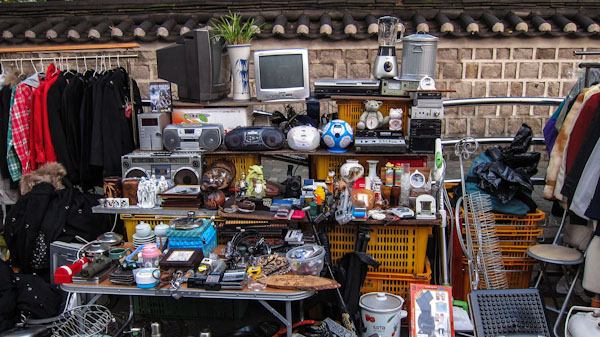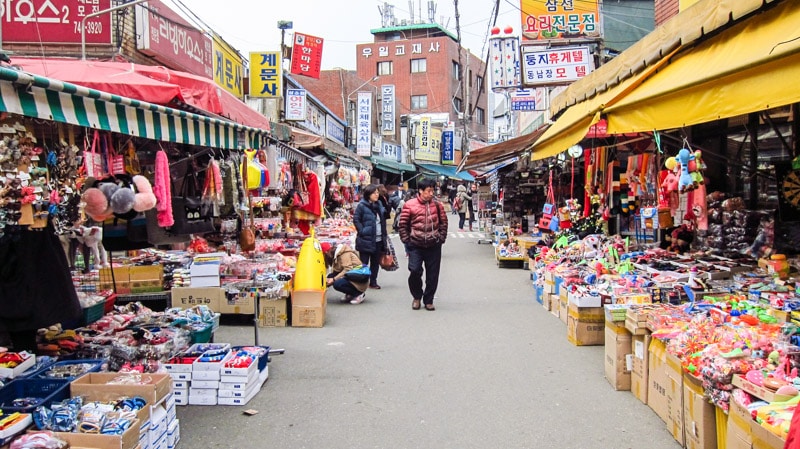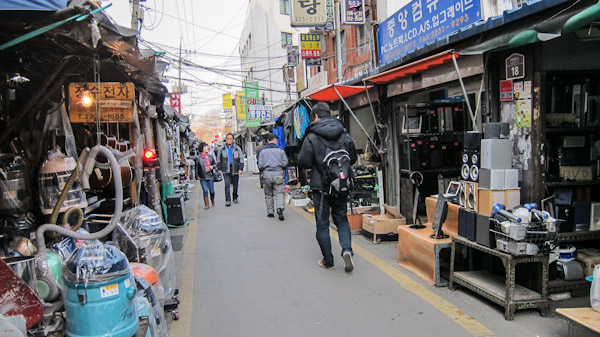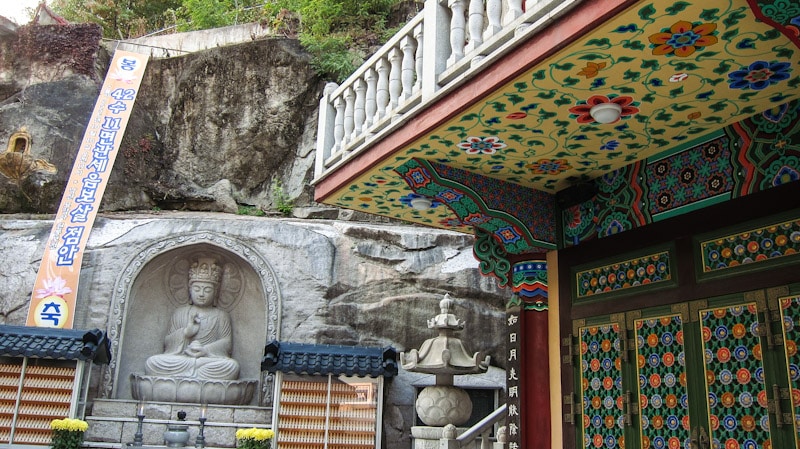
Myogaksa Temple is a small and hidden Buddhist temple located on the side of Mt. Naksan in the quiet residential district of Jongno-gu, Sungin-dong. Getting to the temple requires a short but uphill walk up Choui-ro street from Dongmyo Station below. Myogaksa was established in May 1930 by Monk Taeheo Hongseon.
The location of the temple on Mt. Naksan was based on Feng Shui. It was believed that building the temple here would bring peace and happiness to the residents of Seoul.
Since being established, Myogaksa has gone through two renovations which have expanded the temple grounds.
A Mae Buddha Statue can be found carved into rocks on a cliff on the side of Mt. Naksan. This statue has since been designated a cultural asset of Seoul.
Visitors can also enjoy a Grand Buddha Shrine, a Wontong Buddhist shrine, a preaching hall, a grotto, and Sanshingak Pavilion.
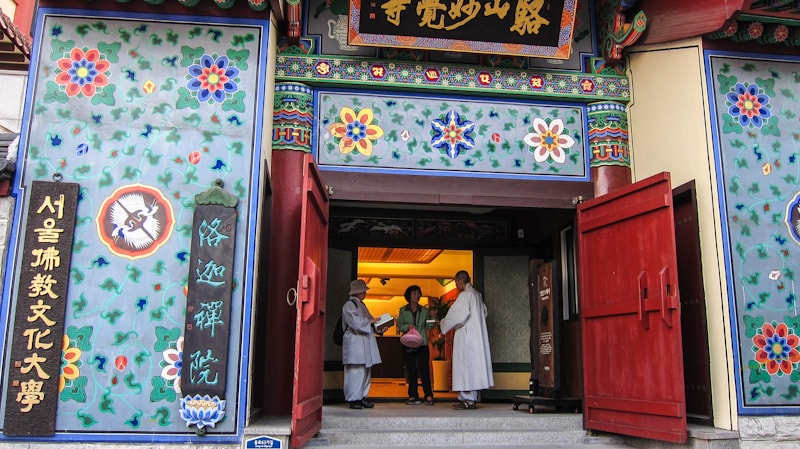
Templestay Program
The Myogaksa Temple templestay is a cultural program offered to anyone who wishes to learn about the life of Buddhists and immerse themselves in the 1700 year history of Korean Buddhism.
The two day, one night program includes an introduction to Buddhism, morning Buddhist service, meditation, tea ceremony, and more.
Participation Fee
Adults : 50,000 won
Children : 30,000 won
Reserve
Reservations can be made by email at yeodiamond@naver.com or by calling 02-763-3345/3109.
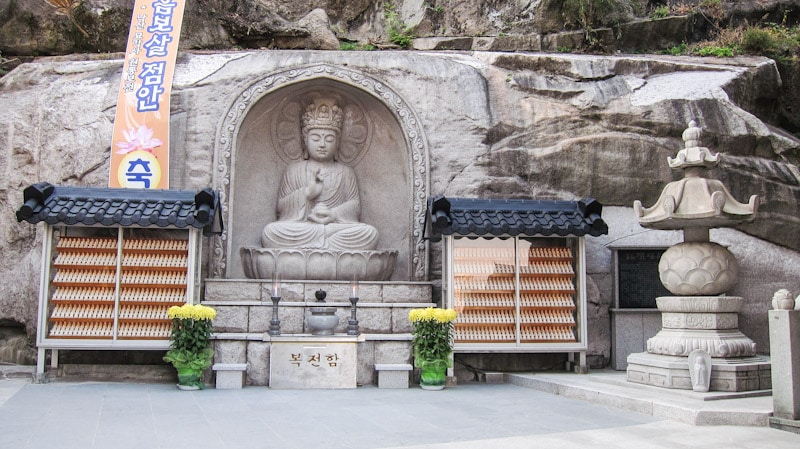
Myogaksa Temple Information
Admission
Free
How to Get Here
Take Subway Line 1 or Line 6 to Dongmyo Station (Exit 2).
Turn left when exiting the station.
Turn left at the first street with the sign pointing towards Myogaksa.
At the next street turn right.
From here, walk up the hill for about 100 meters to reach the temple on the left.
Myogaksa Temple Video
Map
Additional Resources
Viator by TripAdvisor
Viator is a popular online platform that helps travelers book tours, activities, and unique experiences worldwide, including in Seoul. It connects users with a wide selection of options – from sightseeing tours to cultural events and outdoor adventures – all offered by local providers.
Klook
Klook offers discounted tickets and reservations for various attractions and services in Seoul, from theme parks and museums to tours and transportation options.
Rakuten
Save money while exploring Seoul with Rakuten's cashback program. Book your hotels or other services through Rakuten and enjoy cashback rewards and exclusive deals.
If you sign up using the link below, you could earn $30 cashback on your first purchase over $30.
Book Recommendations
For an immersive guide to Seoul, many travelers choose to bring a book along. Fodor's Seoul, for example, offers detailed recommendations on sights, restaurants, maps, and travel tips.
Nearby Sights
Dongmyo Shrine
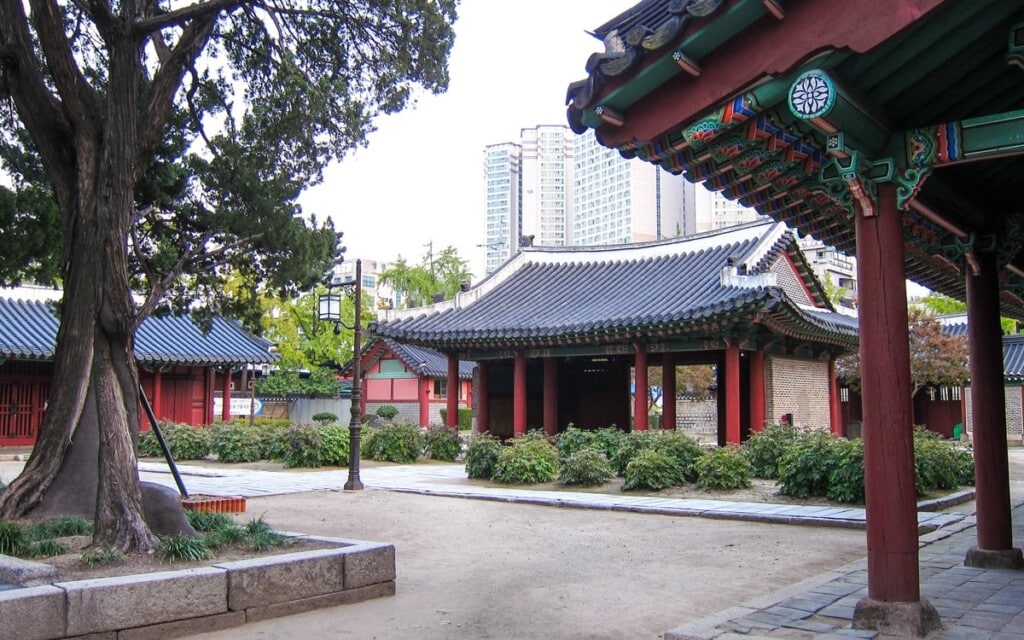
Dongmyo Shrine is a shrine where ancestral sacrifices to the Chinese military commander Guan Yu were performed. It is also known as Seoul Donggwanwangmyo, which means Gwanwangmyo in the east of Seoul. Guan Yu, who died in 219, was a general who played an important role in the downfall of the Han Dynasty (206 BC–220 AD).
Seoul Folk Flea Market
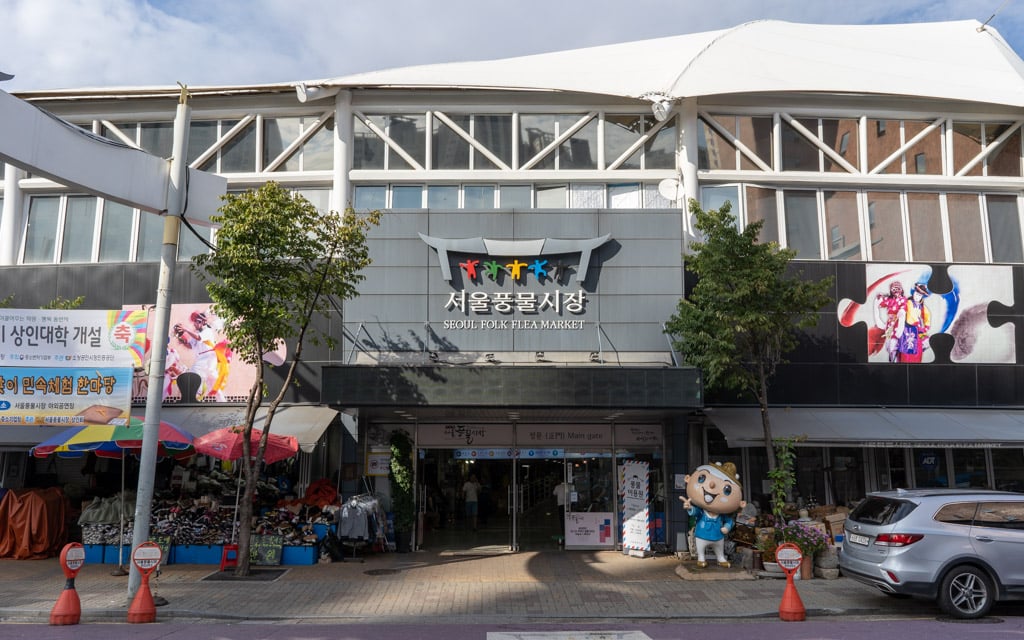
The Seoul Folk Flea Market is a vibrant indoor flea market where you can find traditional and modern Korean folk items including clothes, tools, and food. Almost anything you can think of is sold here including new, old, rare, and vintage items that you many never find anywhere else. Before being moved indoors into the current modern building, vendors and sellers gathered in the area around the Cheonggyecheon Stream to sell their items.
Heunginjimun Gate (Dongdaemun Gate)

Heunginjimun Gate (Dongdaemun Gate), the historic Great East Gate on the Seoul Fortress Wall, dates back to the beginning of the Joseon Dynasty in 1398. Heunginjimun is now the oldest main gate remaining in Seoul after Sungnyemun Gate (Namdaemun Gate) was destroyed by a fire on February 10, 2008. The gate was originally built in 1396 during the reign 4th year of the reign of King Taejo.
Last Updated on Mar 14, 2025
